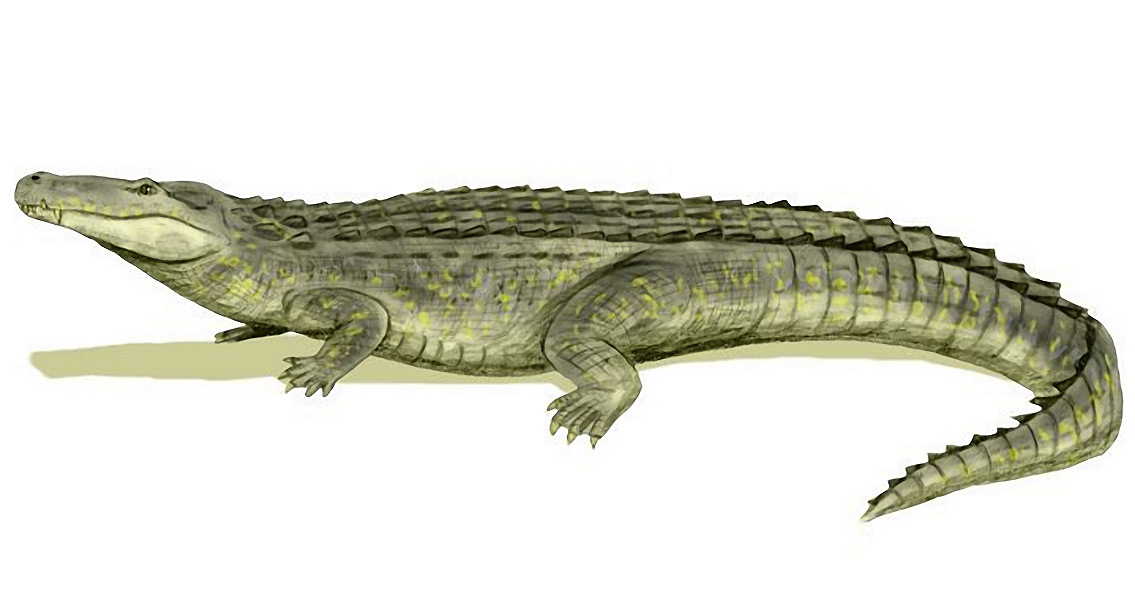<![CDATA[Research into the biological characteristics and lifestyle of an ancient caiman-like animal that lived in the late Miocene period has determined that its jaw strength was substantially greater than that of the Tyrannosaurus Rex, usually considered the mightiest predator of ancient times. The Purussaurus brasiliensis, as the caiman-like species is known, had a bite force of between 7 and 11.5 tonnes per square inch - a lot more than the bite force of the T-Rex, estimated to have been around 5.8 tonnes per square inch. The creature with the deadliest bite on land and water, however, remains the Megalodon, a contemporary of the Purussaurus, which had a bite force of 18 tonnes psi. The Purussaurus brasiliensis inhabited the area that is modern day Brazil Today, the animals that have the greatest bite force are again reptiles, crocodiles, more precisely. Still, they do not come even close to what the Purussaurus Brasiliensis was capable of biting through. The modern-day saltwater crocodile tops the list with a bite force of over 7,700 psi, followed by the Nile crocodile with a bite force of 5,000 psi, and the American alligator, which can bite with a strength of a little over 2,000 psi. Purussaurus brasiliensis was first discovered by a Brazilian botanist, Joao Barbosa Rodrigues, in 1892. Almost a century later, in 1980, paleontologists found a complete skull of the reptile, which allowed them to gain a valuable insight into the creature’s physiology. It reached lengths of over 12.5 metres and in addition to its strong jaws, it had sharp, conical teeth that allowed it to pierce the skin of its prey easily. Its daily diet included up to 40 kilos of meat, which is 20 times more than what modern-day alligators need to sustain themselves, notes one of the study authors, Aline Ghilardi. She adds that although the T-Rex and the Purussaurus belonged to different eras (the T-Rex lived in the late Mesozoic era), if they had met and fought, the T-rex would have lost. Another of the authors of the new research paper, titled "Morphometry, Bite Strength and Paleobiology of the Caiman Purussaurus of the Late Miocene", says Purussaurus brasiliensis would have been capable of eating any other animal, regardless of size, because its jaws were so strong. However, Purussaurus was also a cannibal, which, according to Tito Aureliano, was one of the two most likely reasons it died out. The other reason was change in the South American landscape. Aureliano, a paleontologist with the Federal University of Pernambuco, Brazil, explained in an interview for news agency Efe that the habitat of the Purussaurus had become a scene of radical environmental changes, leading to the extinction of the proto-caiman along with other large animals. He said that when the Andes range had begun to form, it had a fatal impact on this deadliest of all reptiles in the Miocene. The Purussaurus inhabited vast swamps that formed from the shrinking sea of Pebas, which spanned the area of today’s Amazon. These swamps supplied the reptiles with abundant and varied food - from mammals to shrimps - but as the new mountain range began to rise, the swamps started to transform into the rivers we know today. The emergence of jungles was also part of this transformation, which stimulated the evolution of smaller species, effectively dooming the huge reptiles that used to live there. Image courtesy of Wikimedia commons user: Nobu Tamura ]]>
Late Miocene Caiman Had Strongest Jaws in History
